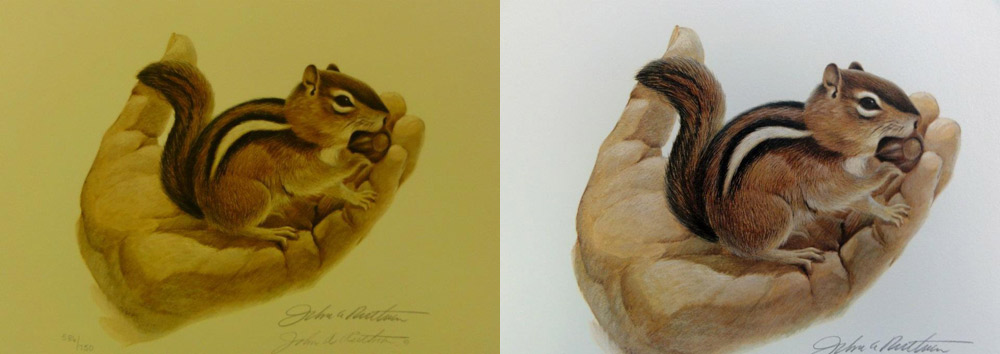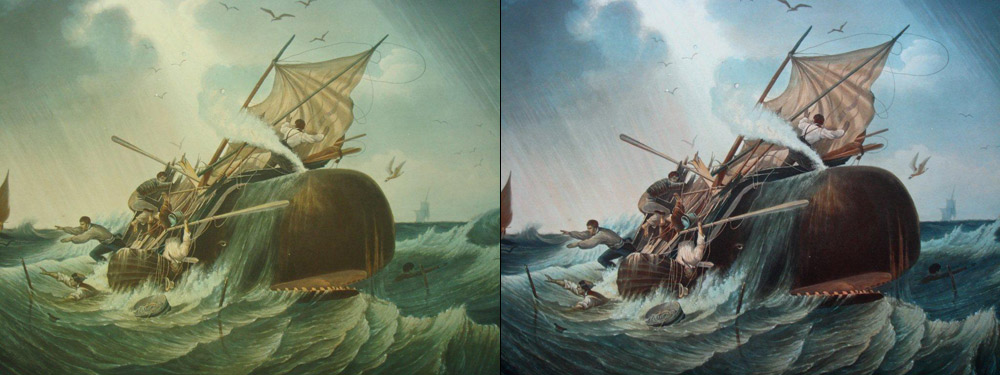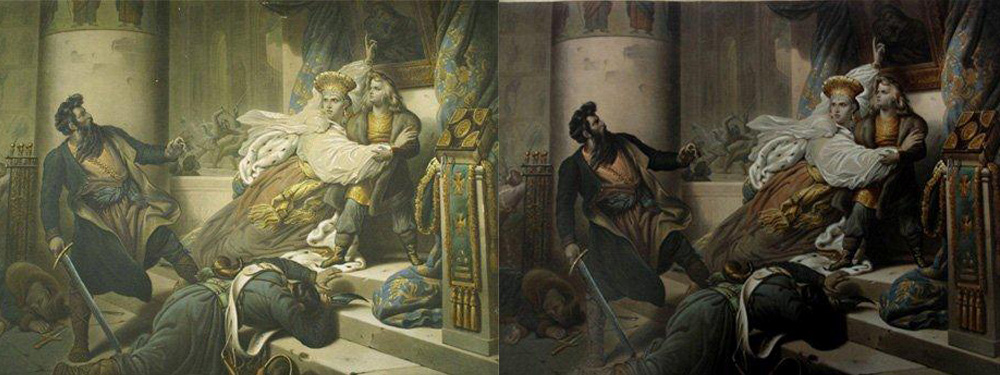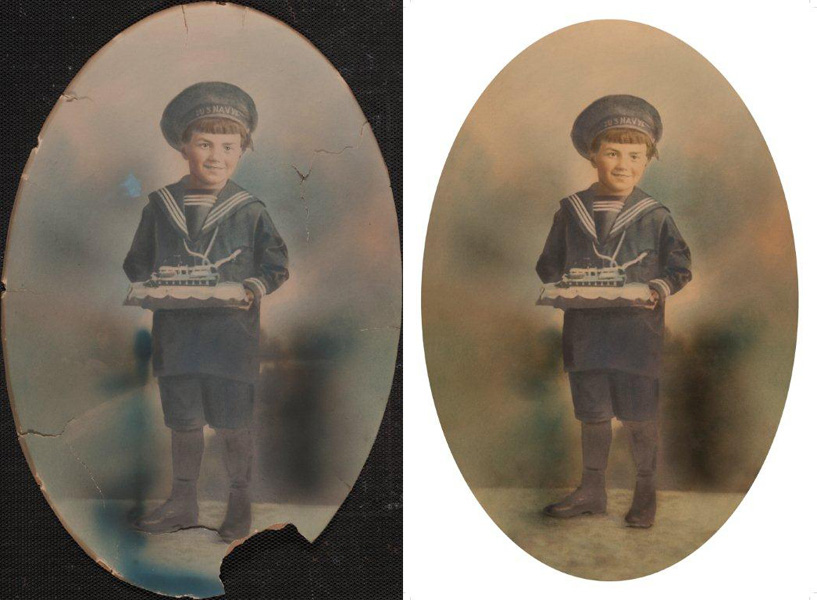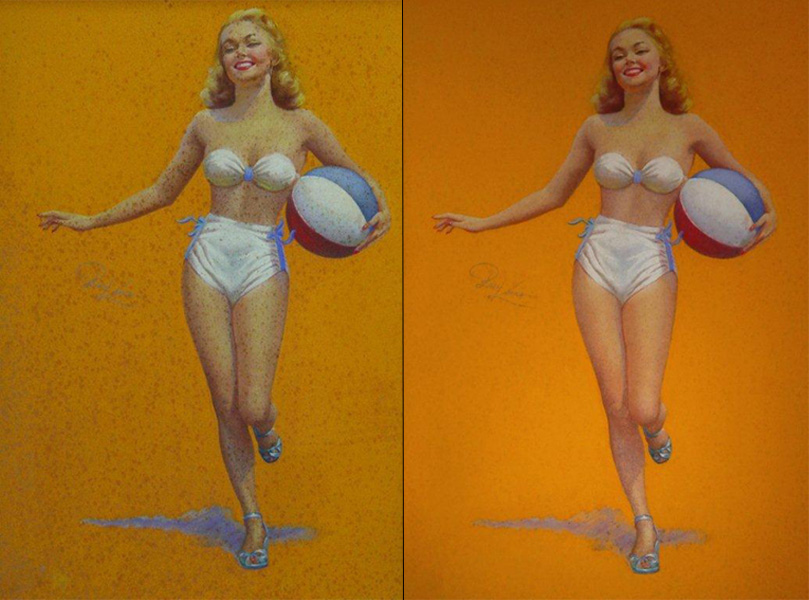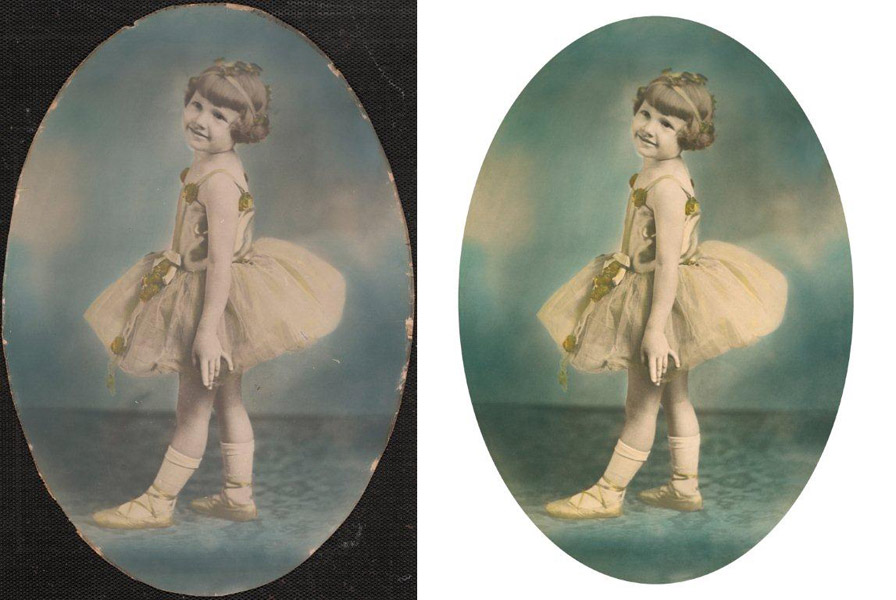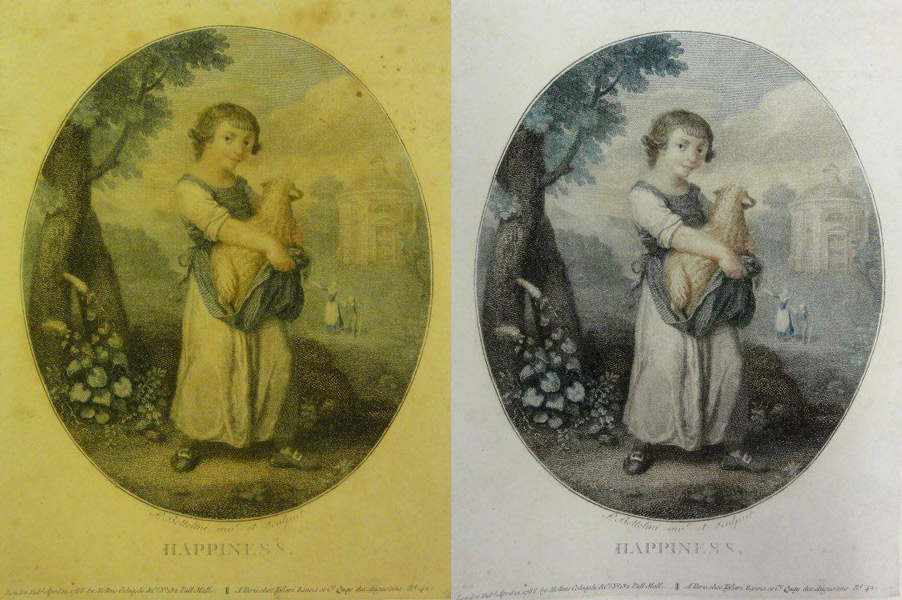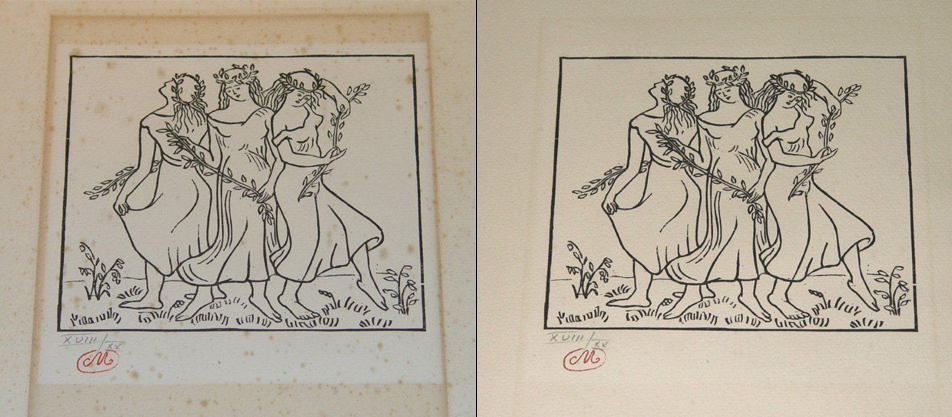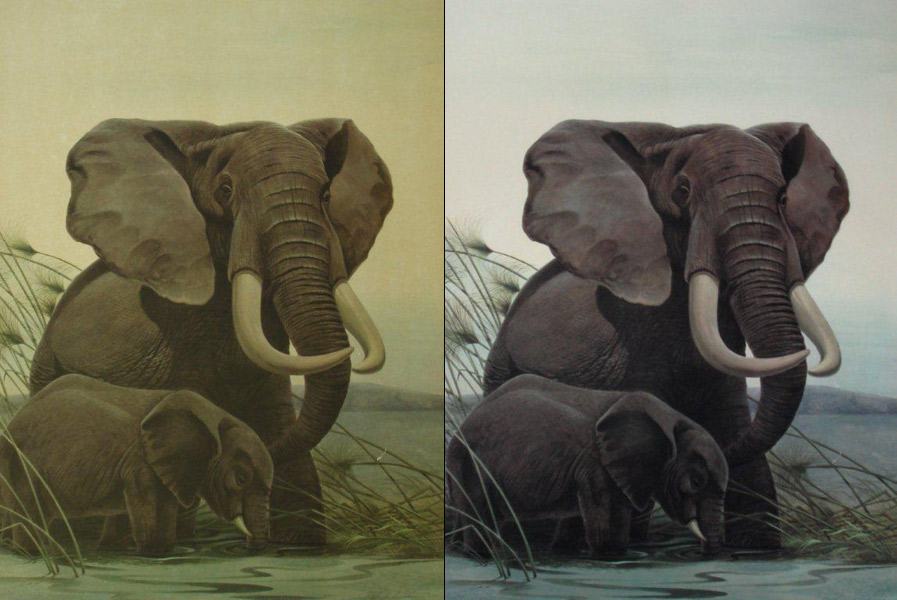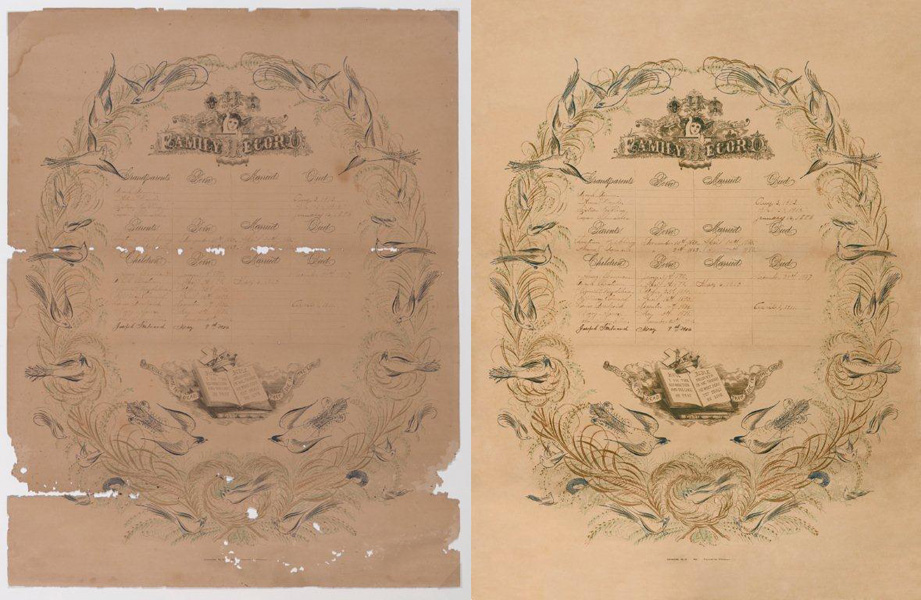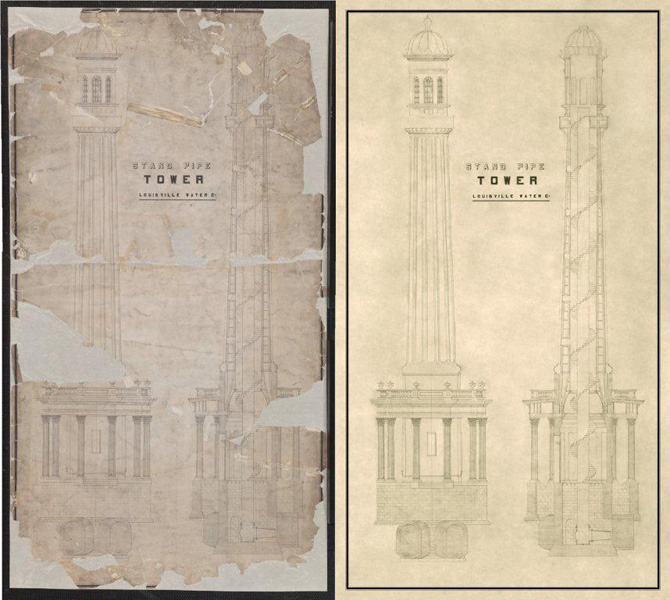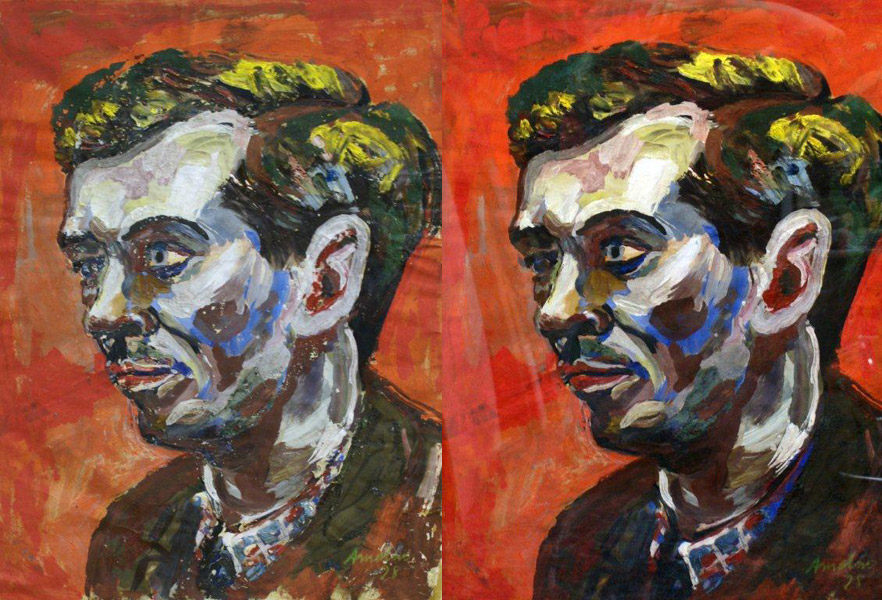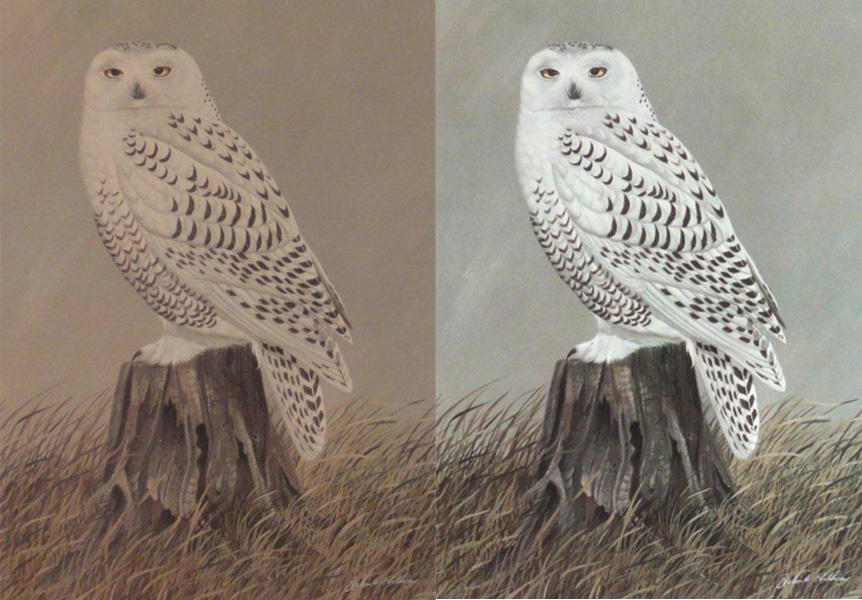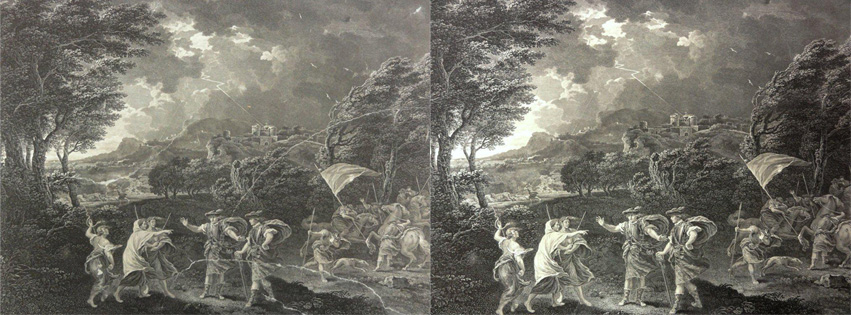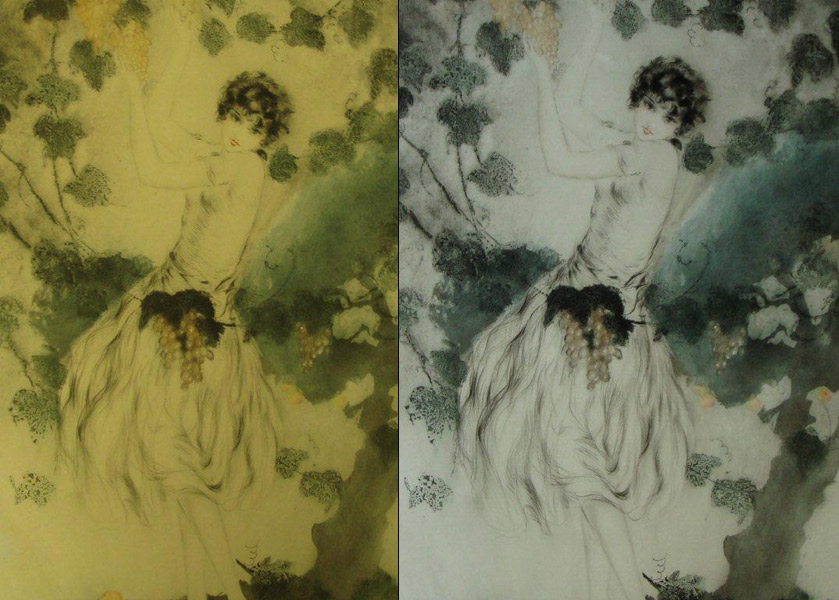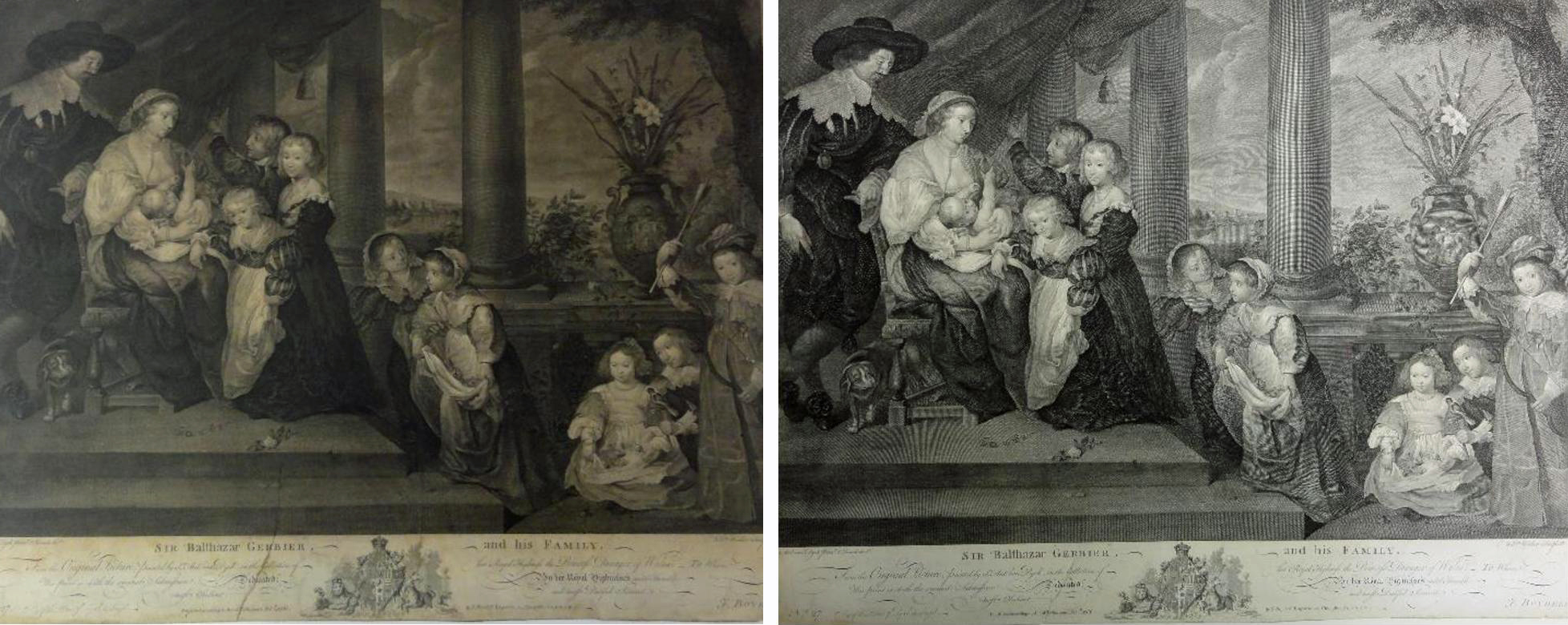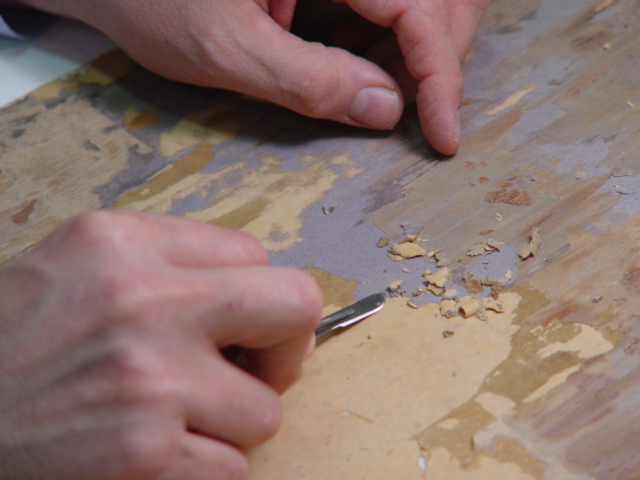Paper requires Special Care
Prints, maps, paintings and documents on paper that have a pH lower than 7.0 are considered acidic, and are not suitable for conservation framing or storage without professional de-acidification. (a generic term for a chemical treatment that neutralizes acid in paper or similar materials, often leaving an alkaline residue in the paper as a buffer against further acid contamination).
Paper Conservation terms
De-acidification stabilizes paper chemically but does not restore the appearance, strength or flexibility. Paper may be acidic because of methods and materials that were used to manufacture it or it may become acidic due to exposure to acidic materials such as wood, cardboard, or pollutants in the atmosphere. Acidic paper is inherently unstable, and will deteriorate over time.
Foxing is generally visible on documents, prints and other works on paper in the form of small circular stains, usually reddish-brown, often having black centers. Foxing is the result of the activity of microorganisms, and is most likely to occur when paper is subjected to damp, stale air. Foxing is frequently mistaken for tide lines or tide marks which are dark lines left by liquid that has migrated through paper or fabric and then evaporated. Tide lines are most pronounced at the farthest point of migration, and can usually be reduced or removed by professional washing.
Mat burn is often mistaken for foxing by the discoloration and embrittlement of the paper which is caused by prolonged contact with an acidic mat or other framing or storage materials. Mat burn usually appears as darkening or yellowing of the paper along the bevel edge of the mat.
Cockled paper is usually wavy or rippled. This often occurs from exposure to moisture, but is also common in fine art prints as a result of the printing process. In the latter case, no attempt should be made to flatten (the process by which creases and wrinkles are reduced or removed. Usually, flattening requires humidifying the paper to make it limber, after which it is pressed between two flat surfaces until dry).
Art on paper, such as prints, drawings, paintings, documents and photographs are inherently fragile, and can easily be protected from damage by:
- Proper care, handling and storage
- Maintaining an environment that limits light exposure, and controls relative humidity and temperature
- Proper Conservation Framing methods and materials
- Never use ink pens and markers to label paper
- Self-adhesive tapes should not be used to mend tears, as they cause problems as they deteriorate and yellow
- Do not store important papers and old documents in the basement or attic
- Have acidic paper professionally de-acidified

